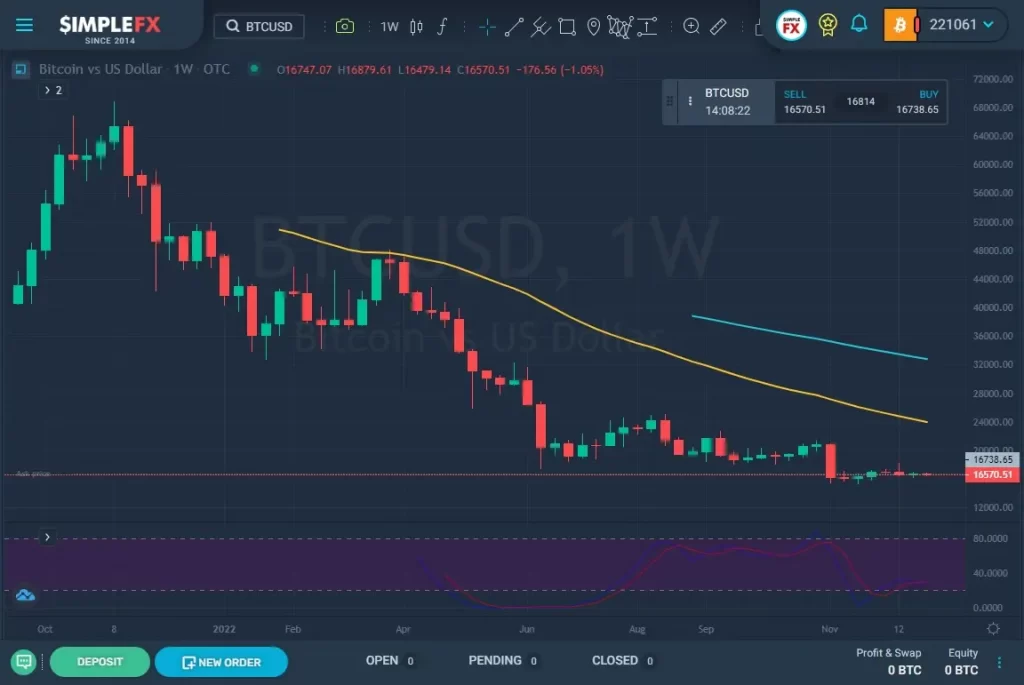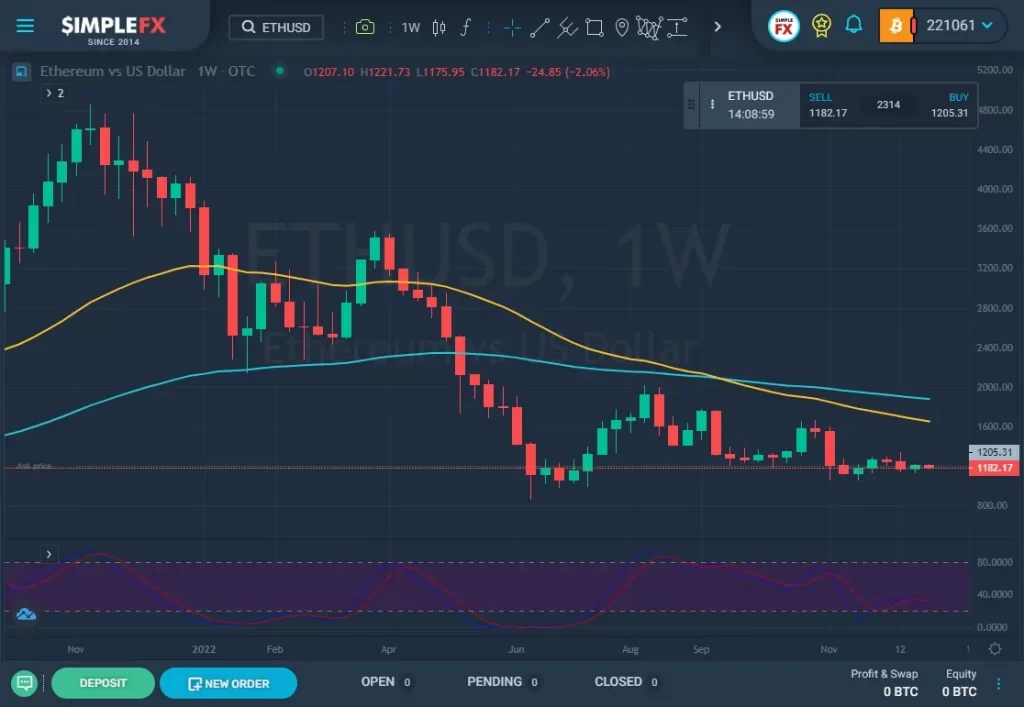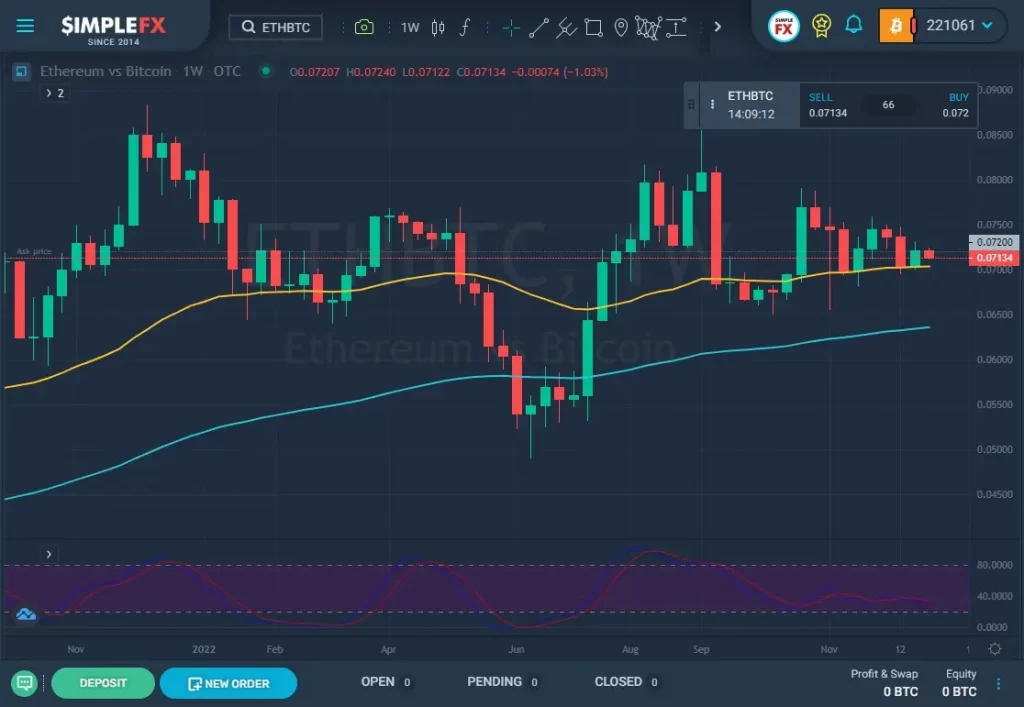2022 Crypto Review. What happened in 2022, and what will happen in 2023?
Are you a cryptocurrency bull looking for reasons to be optimistic about the future of digital currencies? What can we anticipate from the cryptocurrency markets in 2022, and how will the environment shape prices in 2023? Read this 2022 Crypto Review and get informed on the most important events for the crypto market in the upcoming year.
Table of contents:
1. 2022 Crypto Review: What Happened This Year?
- Following the demise of TerraUSD and LUNA, the value of every prominent cryptocurrency fell in the first half of 2022.
- Leading US cryptocurrency companies – FTX and FTX.US – were forced to file for Chapter 11 bankruptcy provision in November 2022.
- BlockFi, another exchange, submitted a Chapter 11 bankruptcy petition. The effects of this crypto meltdown are still felt. “crypto winter” has been used to describe this market cooling spell.
- Contrary to expressions like “market correction” or “bear market,” crypto winter lacks a precise meaning. The market capitalization of the top 100 cryptocurrencies on November 14, 2022, was around $830 billion. That’s a decline of around 70% from the market valuation of $2.7 trillion on November 7, 2021.

- During a bull market in traditional finance, Bitcoin’s price fell by more than 50% from its all-time high in 2018, ushering in the most recent crypto winter.
1.1. Terra LUNA collapse
The collapse of the algorithmic stablecoin TerraUSD (known by the ticker UST) and the coin that supported it, Terra (known by the symbol LUNA), totaled $40 billion. We’ll refer to it as LUNA because it sounds like TerraUSD. (Note: TerraClassicUSD and TerraClassic were renamed TerraUSD and LUNA.).
The two currencies are connected because TerraUSD, a so-called algorithmic stablecoin, guarantees price stability at a constant $1. And Investors anticipated that LUNA, its companion coin, would behave more like a conventional cryptocurrency with the potential for significant price gains.
1.2. LUNA‘s Quick Demise Shakes Investors and Companies
In May, this project unraveled. LUNA was worth $116 in April. Since May, the price has dropped to a small fraction of a penny. In a July speech at the Bank of England Conference, Federal Reserve Vice Chair Lael Brainard compared it to a classic bank run. The quick demise of LUNA shook individual investors and companies with business models that relied on this project to deliver on its promise.
This project failed in May. In April, LUNA was valued at $116. The cost has decreased to a mere penny-fifth since May. In a July address at the Bank of England Conference, Federal Reserve Vice Chair Lael Brainard compared the current situation to a classic bank run.
Individual investors and businesses whose business models depended on LUNA to fulfill its promise were shaken by the project’s sudden collapse.
1.3. Celsius and Three Arrows Capital crisis
The 2017 launch of Celsius Network was reminiscent of a bank. According to the company’s website, users could deposit cryptocurrency and earn interest up to 17%. Celsius would offer loans based on those deposits. (Last year, authorities in other states questioned whether Celsius items were lawful.).
The business forbade its 1.7 million subscribers, who at its height had access to $20 billion in money, from withdrawing or moving them in June 2022. The firm declared bankruptcy in July. The corporation claimed in a court document that between March 30 and July 14, 2022, the value of its assets had fallen by 80%.
1.4. Cryptocurrency Hedge Fund Three Arrows Capital Declares Bankruptcy and Flees With Unpaid Debts
At its peak, the cryptocurrency hedge fund Three Arrows Capital controlled nearly $10 billion in assets. Still, the business could not pay back billion-dollar debts due to falling cryptocurrency prices. After declaring bankruptcy, its founders fled, and it is still unclear where they are now.
A cryptocurrency brokerage business called Voyager Digital filed for bankruptcy in July. It had stopped consumer withdrawals before this filing. The business attributed most of its financial issues to Three Arrows Capital’s failure to fulfill a $350 million loan payment.
1.5. FTX – the bankruptcy that dragged all Industries Down
On November 11, 2022, two significant cryptocurrency exchanges – FTX and FTX.US – filed for bankruptcy. Investors took action following a sell-off of FTT, FTX’s native token, and many withdrawals. Shortly after declaring bankruptcy, the exchanges allegedly suffered an attack that reportedly resulted in hundreds of millions of dollars being lost from user wallets.
Following the FTX meltdown, BlockFi, a cryptocurrency exchange, halted regular company operations and froze customer withdrawals. On November 28, it declared bankruptcy. It was previously scheduled to be bought by the firm and had a line of credit with FTX.US.

If FTX was lending money from its clients to the trading company Alameda Research, which SBF also owns, it is still under investigation. Bankman-Fried has attributed the collapse of the formerly $32 billion exchange to inadequate management and bookkeeping. Still, these straightforward explanations must be elaborated upon.
2. What can we expect in 2023?
It is essential to be aware that the value of any particular cryptocurrency, including those you may be considering investing in, could decline significantly or even go to zero in the future. This is particularly relevant for the upcoming year, 2023, as market and economic conditions may change and impact the value of cryptocurrencies.
It is essential for investors to carefully consider the specific risks associated with each cryptocurrency they are considering investing in, as well as the broader market and economic conditions.
2.1. Bitcoin vs. Ethereum rivalry will continue in 2023
It is also important to diversify investments and manage risks by thoroughly researching and considering the specific risks of each cryptocurrency, as well as the broader market and economic conditions. It is crucial to keep in mind that investing in cryptocurrency carries significant risks and that the value of any particular cryptocurrency could decline significantly or even go to zero in the future.

2.2. Risks and opportunities ahead
While investors need to be aware of the risks associated with investing in cryptocurrency, it is also important to note that the market may recover in 2023. Here are five potential factors that could contribute to an early bull market in cryptocurrency:
- Increased crypto adoption: As more people and businesses begin to use and accept cryptocurrency, demand for it may increase, leading to a rise in value.
- Improved infrastructure: As the infrastructure for cryptocurrency continues to improve, it may become more accessible and more convenient for people to use and invest in it, leading to increased demand.
- Favorable regulatory environment: Changes in the regulatory environment, such as creating clear guidelines or recognizing cryptocurrency as a legitimate asset class, could increase confidence in the market and lead to increased investment.
- Technological advancements: Developing new technologies or improving existing ones could make cryptocurrency more accessible and secure, leading to increased demand.
- Increasing mainstream awareness: As more people become aware of the potential benefits of cryptocurrency, demand for it may increase, leading to a rise in value.
The market can worsen before it improves, so that recovery might take months or years. More cryptocurrency businesses directly or indirectly impacted by the effects of crypto winter may fail, and several cryptocurrencies may drop to zero or very close to zero.
3. Things To Watch in Crypto in 2023
Michael Saylor, a co-founder of MicroStrategy, recently stated that the cryptocurrency business must mature and conjectured that the current drop in the market would hasten the speed of regulation. At this point, there is no way to escape federal monitoring.
Last month, Karine Jean-Pierre, the press secretary for the White House, voiced her concern that cryptocurrencies can be detrimental to everyday Americans and emphasized the need for adequate regulation. The most recent report, according to Jean-Pierre,
“further reinforces these issues and highlights why cautious regulation of cryptocurrencies is required.”
3.1. Is the return of the bull market inevitable?
Many cryptocurrency enthusiasts think their most challenging days are behind them. Some people are still determining what to anticipate. Well, there can be a bright cryptos’ future ahead. What will the government imply for the crypto industry?
The following bull market will begin with a recession:
- In 2023, a downturn is unavoidable.
- The warning indicators are already visible. While the stock market experiences fresh lows, Treasury rates are rising to new highs.
- Since the epidemic, production has slowed and will probably continue considerably, contributing to stagflation.
- Low retail confidence will impact spending as consumers cut down in anticipation of the coming crisis in the cost of living.
The idea is that bitcoin will once again be a store of value. Stores of value frequently experience early recessionary declines followed by late-stage recoveries. Once the crisis has taken root, I wouldn’t be shocked to see commodities like gold and bitcoin bounce before most other assets. Bitcoin functions similarly to a commodity.
3.2. Exploring the Possibilities of Web 3: Corporate Adoption of NFTs to Drive Mainstream Acceptance
It is a valuable store of value that functions like gold. Therefore, there is a demand for it regardless of what is occurring in the macroeconomic environment, perhaps not in the production of physical goods but rather as a means of delivering financial services and eCommerce.
Brands will be the real force behind mainstream acceptance, driven by corporate adoption. More pilot initiatives will be implemented the following year as businesses continue to explore the possibilities of Web 3. They will look at the correct strategic integration into their ecosystems rather than just cash-grab NFTs.
3.3. In 2023, Crypto Adoption Should Grow
The Starbucks Odyssey loyalty program is an excellent illustration. Loyalty is a use case where cryptocurrency and blockchain provide a good match and a chance for brands to develop innovative programs that benefit companies and individuals. Businesses will find it simpler to build on as the underlying app chains continue to develop.
The market will consolidate as weaker players struggle to expand in the upcoming year. In contrast, others succeed in becoming relevant to the general public.
In late 2022, the cryptocurrency market took a cautious approach as investors and industry participants began to focus on the market’s long-term potential.
3.4. Crypto Community Focuses on Professionalism to Gain Mainstream Respect and Adoption
This shift in attitude, explained in the above 2022 crypto review, is expected to continue into 2023 as the crypto community looks to establish itself as a serious and respected player in the financial world. One way this may manifest is at events and conferences where the crypto community gathers.
Instead of the casual surfer and skater gear that has often been associated with the crypto world, attendees may start to see more suits and more formal attire. This shift towards a more professional image may reflect a desire to be taken seriously by mainstream investors and financial institutions.
It could indicate a greater focus on building the infrastructure and regulatory frameworks needed to support cryptocurrency’s growth and mainstream adoption.
4. 2022 Crypto Review: A Take-Home Message
As we move closer to 2023, it’s essential to keep up with the latest news and developments in the crypto industry so that you can make an informed decision about your investments. A 2022 crypto review can help you stay up to date on the latest news and trends.
In 2022, the demise of TerraUSD and LUNA caused a decline in the value of all major cryptocurrencies. This led to the bankruptcies of US cryptocurrency companies such as FTX and FTX.US, and BlockFi. The market capitalization of the top 100 cryptocurrencies dropped by 70% from 2021 to November 14, 2022, and Bitcoin prices dropped by more than 50% from their all–time high in 2018, resulting in a period known as the ‘crypto winter.’
Michael Saylor recently suggested that the current drop in cryptocurrency could help speed up the regulation process. Karine Jean–Pierre, the Press Secretary for the White House, voiced her concern that cryptocurrencies could be detrimental to everyday Americans and the need for adequate regulation. Despite the uncertain future of cryptocurrency, many enthusiasts remain hopeful that the bull market will return and that there is a bright future ahead. It is yet to be seen what kind of impact government regulation will have on the industry.

